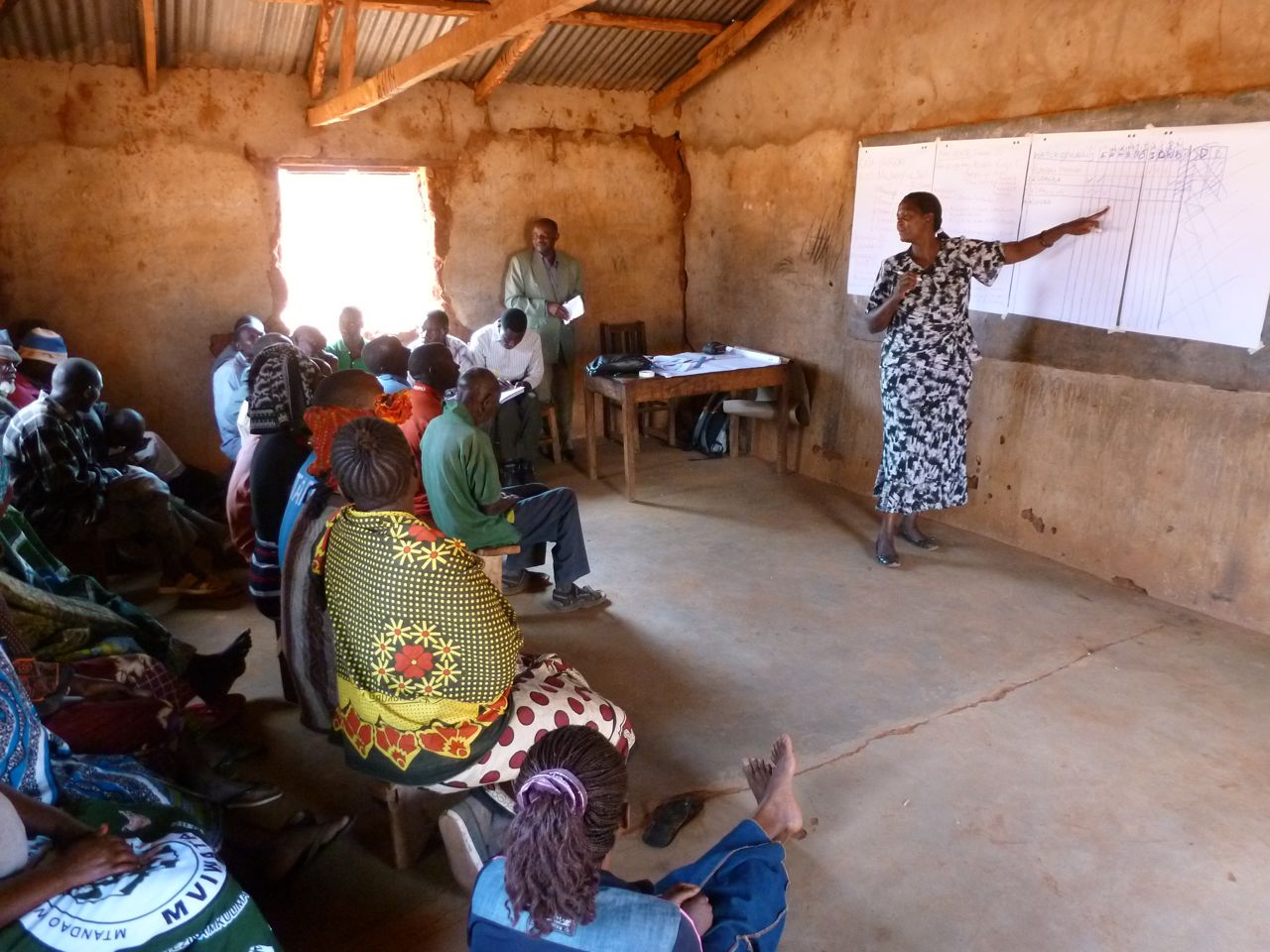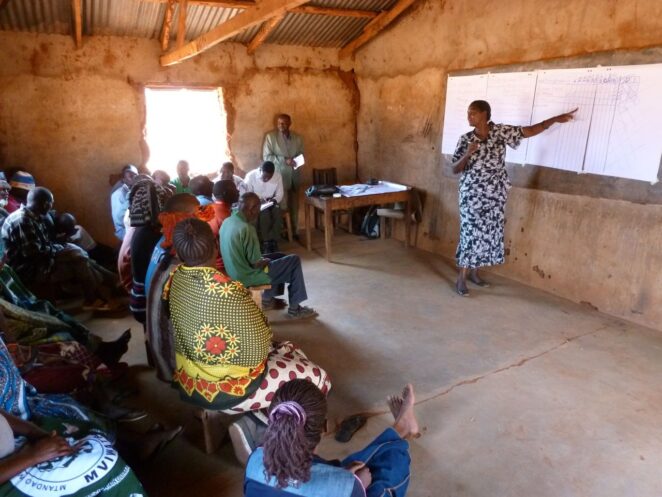Case-study /
Climate Vulnerability and Capacity Analysis in central Tanzania


Methods used
Analysis was done using a combination of participatory tools from the Climate Vulnerability and Capacity Analysis (CVCA) toolkit developed by CARE International. Participatory tools used to gather information in the field included seasonal calendars, historical time lines and climate change vulnerability matrices.
- Seasonal calendars help to analyse changes in seasonal activities and identify periods of stress and hazards.
- Historical time lines helped to get an insight into hazards and climate trends.
- The climate change vulnerability matrix exercise helps to quantify the impact of each key hazard on the most important livelihood resource, then identify and evaluate copying strategies currently used to address the hazards identified.
The community consultations also provided an opportunity to raise community awareness of the impacts of climate change and how communities can increase their resilience.
Results
The key livelihood resources identified by participants in all villages are land, water, agriculture/livestock, forest, roads, primary school, dispensary and human resources. Deforestation, drought, and diseases are the main hazards affecting the livelihood resources in all surveyed villages. Other hazards include unreliable rainfall, strong winds, pests, soil erosion, overgrazing, poor education, seasonal floods and bush fire.
The communities pinpointed deforestation as a major hazard affecting all the livelihood resources. Cutting trees for charcoal, fuel wood and building materials for sale, as well as overgrazing, are the reported causes of deforestation. This deforestation has resulted in soil erosion, scarcity of firewood and building materials as well as drying up of water sources. The communities in the surveyed villages recognise a link between forests and rainfall and consider that severe deforestation has resulted in less rainfall. Drought is the second most important hazard that significantly affects livelihood resources in the surveyed villages, with a significant effect on water availability, agriculture (crops and livestock) and the human population. Diseases (both humans and livestock diseases) are reported to have a moderate effect on the livelihood resources. They include nutritional diseases due to acute food shortage and occasional water borne diseases (e.g. diarrhoea and dysentery).
Key messages
Rural communities in Dodoma, in semi-arid central Tanzania, are aware of climate change and have considerable experience of the impacts of drought and deforestation. They have tried various strategies to overcome the impacts of climate change but with limited / differing levels of success. The poor performance of such strategies is mainly attributed to poverty, weak institutional capacity, and low take-up of improved technology. This has resulted in frequent hunger and food insecurity. Such conditions are anticipated to worsen in future as climate change challenges increase as predicted, unless adaptation strategies are improved.The following interventions are proposed to increase the adaptive capacity of vulnerable communities of semi-arid areas of Central Tanzania:
• Education on climate change adaptation practices• Afforestation / reforestation• Sensitization of communities on adoption and use of newly introduced technologies• Introduction of alternative energy (e.g. energy saving stoves, solar, wind)• Enforcement of established environmental by-laws• Strengthening established bodies such as environmental committees• Improved agriculture practices (e.g. improved seeds, GAP)• Education and inputs on use of animal power in agriculture• Introduction of improved livestock breeds (cattle, goats and chicken) for high production potential• Improved livestock disease control and management• Small irrigation schemes• Rain water harvesting, roof catchment, charko dams, sub-surface dams• Increased use of farmyard manure• Pasture establishment• Modern beekeeping• Leather making
The study was conducted by six partner organizations:
Lead organisation: Institute of Rural Development Planning (IRDP).
Partners: Tanzania Organic Agricultural Movement (TOAM), Dodoma Environmental Network (DONET), Maji na Maendeleo Dodoma (MAMADO), Dodoma Municipal Council (DMC) and Agriculture Research Institute-Hombolo (ARI).
